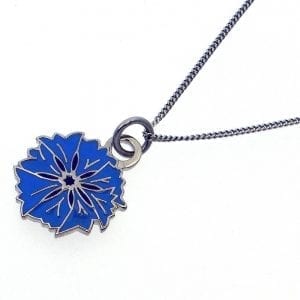Subtotal: £12.50
1914-Allies-1918 Cufflinks, National Symbols the Poppy & Le Bleuet
£16.95
The Allies 1914 – 1918 Cufflinks to commemorate together the national flowers of remembrance for France, Canada, new Zealand, America, Australia, South Africa and Great Britain.
Size:
20 x 15mm each with bar fittings.
Complete with a presentation box styled off a 1915 postcard, and information leaflet.
The Cornflower
The symbol of remembrance in France to the fallen in all wars and to help those who remain.
The flower was chosen to embody the National Symbol of Remembrance for France.
A legacy from the trenches in the Great War. Symbolic of the young soldiers of France in their bright new uniforms of Horizon Blue dubbed ‘Blueberries’
A flower of the field which in spite of the horrors and chaos of the trenches continued to flourish and grow on the battlefields.
Not surprising that the Cornflower became synonymous with the terrible sacrifice and ultimately a symbol of remembrance.
The Cornflower is such a beautiful delicate flower difficult to capture in any medium especially metals and precious metals, after many attempts to emulate the three-dimensional effect that characterises the flower into a practical wearable item we are proud of the result and hope you will wear it with pride as an everyday symbol lest we ever forget. Every piece is back stamped with our signature Classic Badge logo.
The Remembrance Poppy
Poppies have long been used as a symbol of remembrance. Today, they are mainly used in the UK and Canada to commemorate their servicemen and women who have been killed since 1914. The use of the poppy was inspired by the above World War I poem ‘In Flanders Fields’, written by John McCrae, who wrote it after witnessing the death of his friend. It was at this time he noticed how they had sprung up in the disturbed ground of the burials around the artillery position he was in. This is what is referenced within the first stanza (verse).
Inspired by this poem, Moina Belle Michael, made a personal pledge to ‘Keep The Faith’, which is her poem dedicated to the remembrance of all those lost. In was in November 1918 at the YMCA Overseas War Secretaries conference in New York after reading ‘In Flanders Fields’ that she vowed always to wear a Red Poppy, going on to campaign to have the Red Poppy used as the national symbol of remembrance. At this same conference, Anna E. Guérin was inspired to introduce the artificial poppies that are commonly used to day.
















